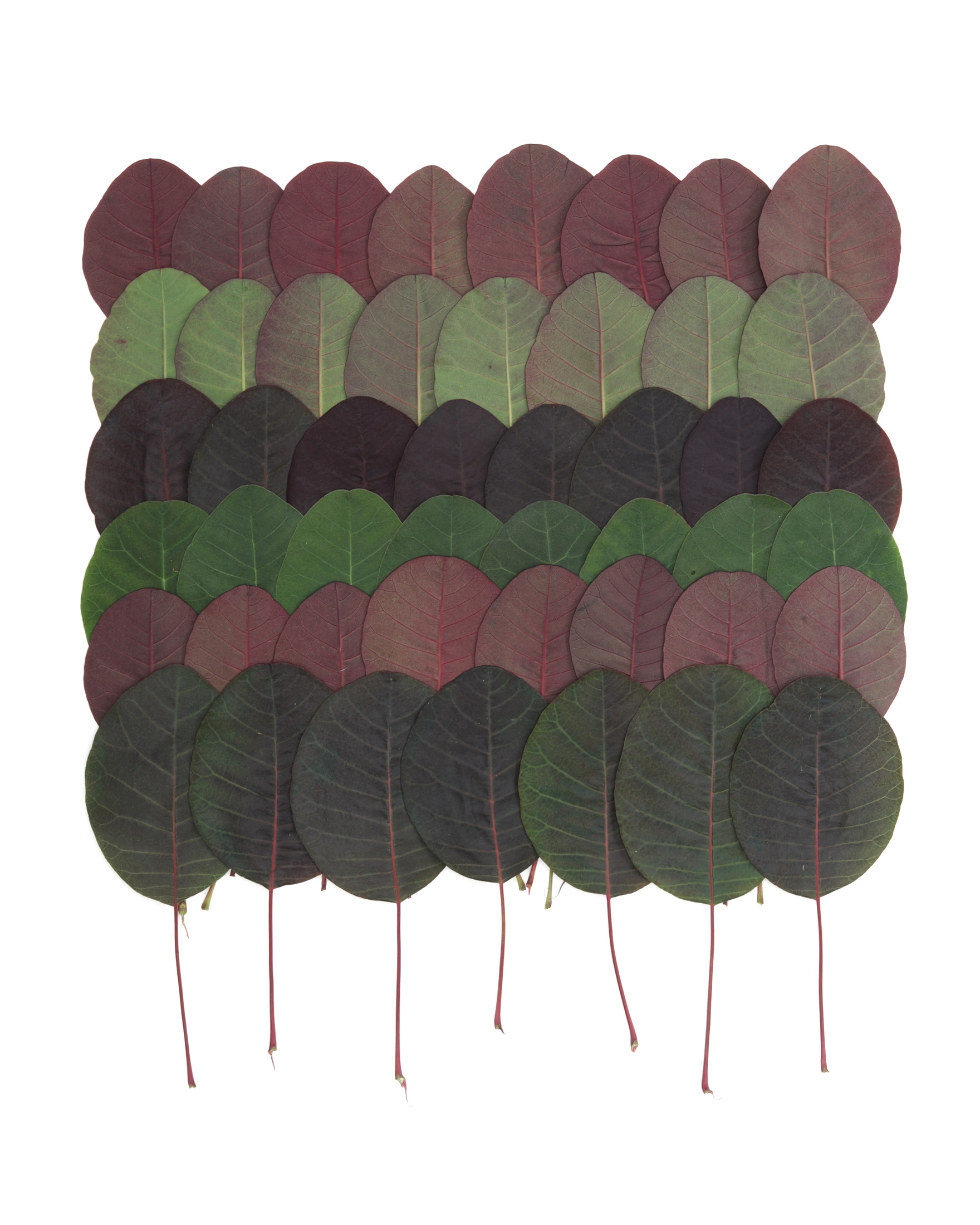
Take Three
My third take on the same pile of mid-August smoke-bush leaves. This time with the emphasis not on shape, but on color. In particular the gradient of green to purple that occurs along each branch. So now you have them all: Three take son the same handful of leaves. Often when I am making a composition, I ask myself what is most interesting about my subject: shape? color? form? texture? stage? And then I try to make a composition that highlights that particular quality the most. Sometime is it more than one thing, but often there is usually one specific quality that caught my attention in the first place–the furry stem, the gradient of colors, the ribbed texture of the under-leaf…That is always my starting point.
smokebush leaves in mid August (Cotinus)
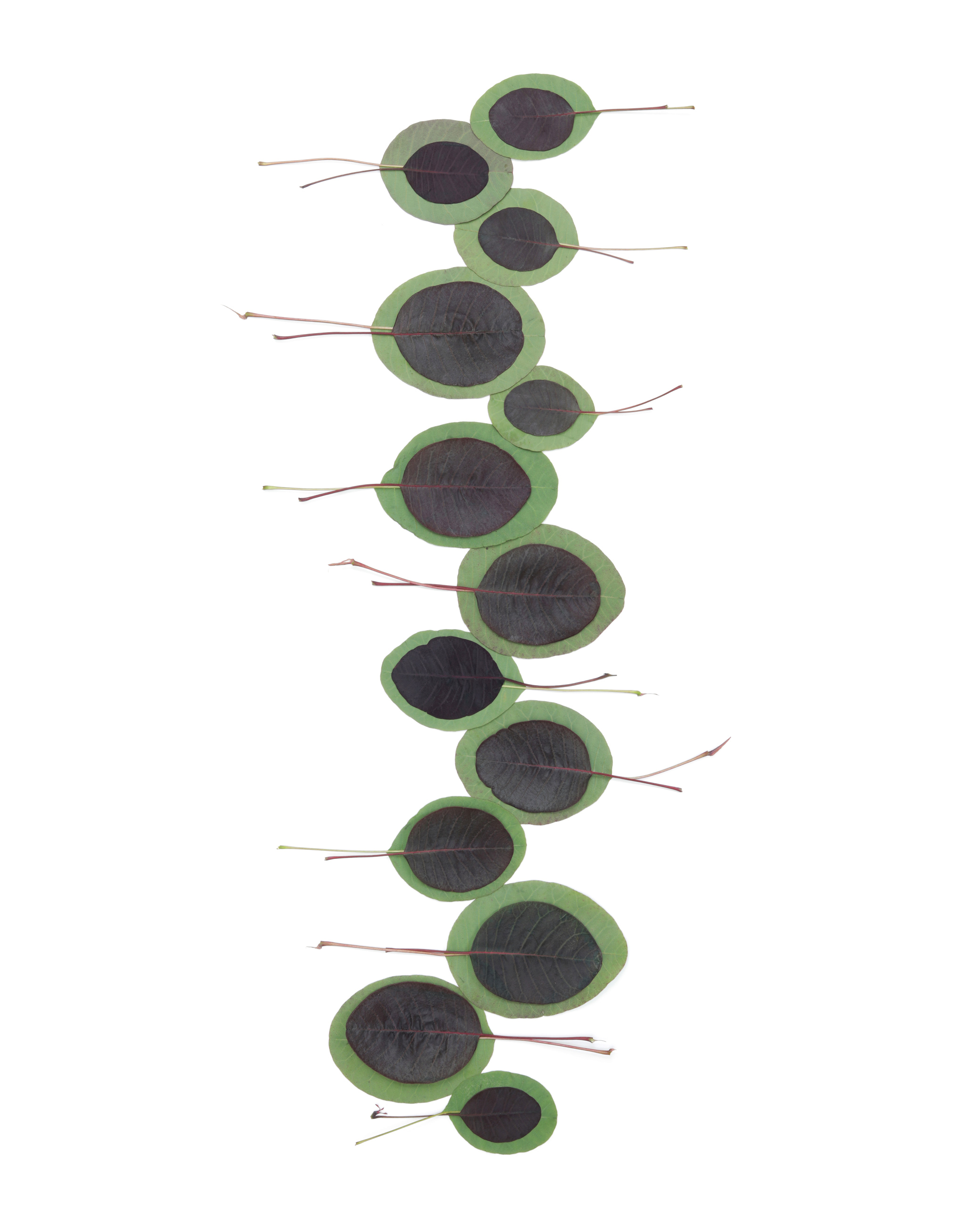
Take Two
Here is composition number two with the same pile of mid-August smokebush leaves. How much do you think I want to nudge that second to the bottom leaf-pair to center the top leaf better? Lol. Actually, this is a good opportunity to talk about imperfection in design. There is a long history of artisans deliberately putting imperfections into their work to give each piece a unique character, cultural significance, and emotional connection to its creator. It is well known, for example that traditional rug makers, including Navajo, Islamic, and African American weavers, have intentionally incorporated imperfections into their work because they believed that only god can make things perfect. Humans are flawed, they reasoned, and since our flaws make us human, to celebrate them is to acknowledge our humanity. I did not deliberately off-set that leaf, but on second thought, I now rather like it. Or at least celebrate it as my flawed humanity :-)
smoke-bush leaves in August (Cotinus)
-
…and the potter George Orr was a master of this quirk. I especially like the stems in this composition
reply -
Wabi sabi at its best – not perfect. This is delightful. It makes my eyes happy :)
reply -
Ooops George Ohr
reply
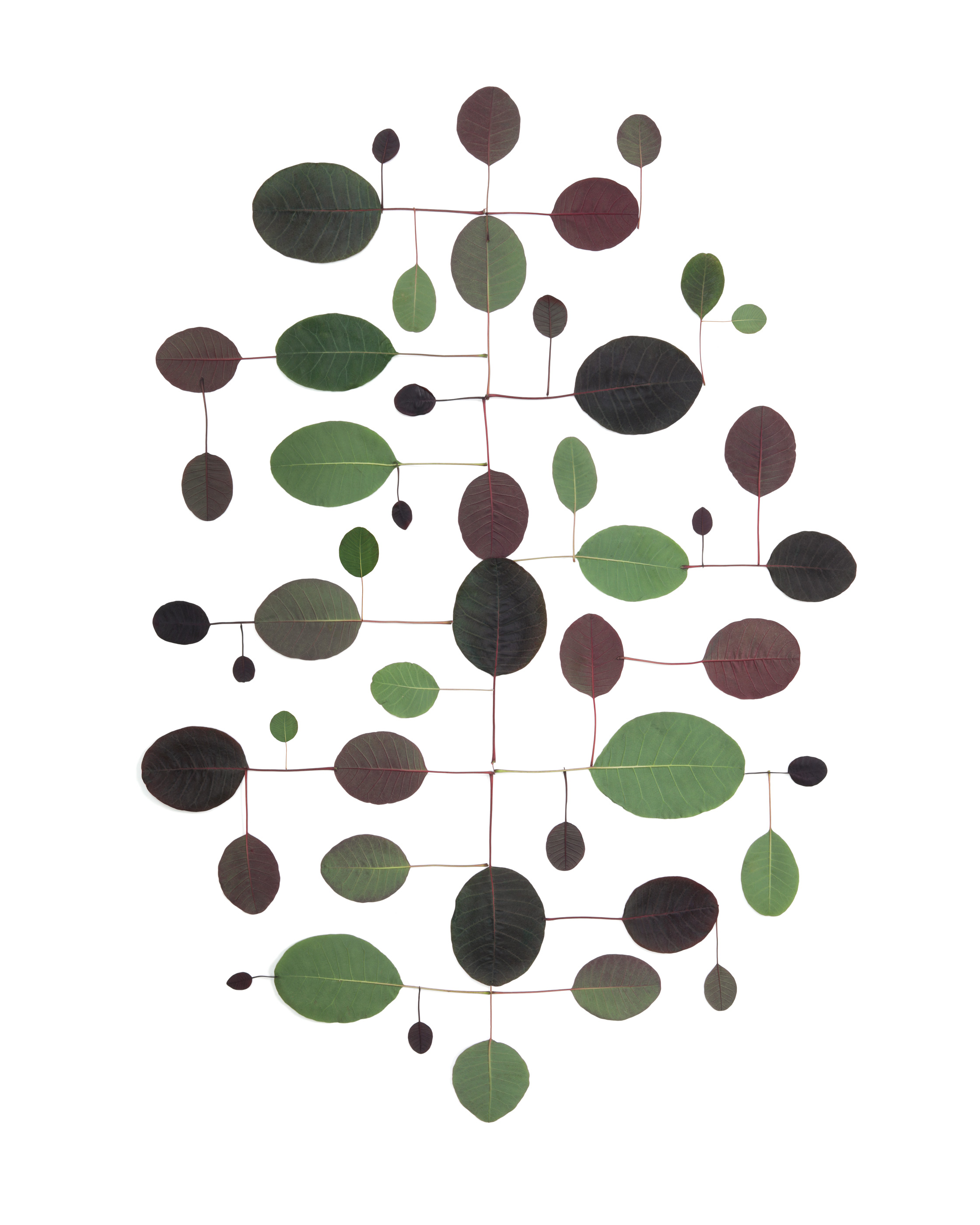
a perfectly cooperative subject
Repetition of form and gradation in color: smoke bush leaves are this flat-lay artist’s dream subject. Today I cranked out three compositions using the leaves from just two branches. The compositions are so different, and I like each one so much that I plan to share all three with you. I don’t typically do that. If I make multiple compositions from the same subject, I usually choose one favorite to share. this time I am making an exception. Because…..smoke bush.
smoke bush leaves in August (Cotinus)
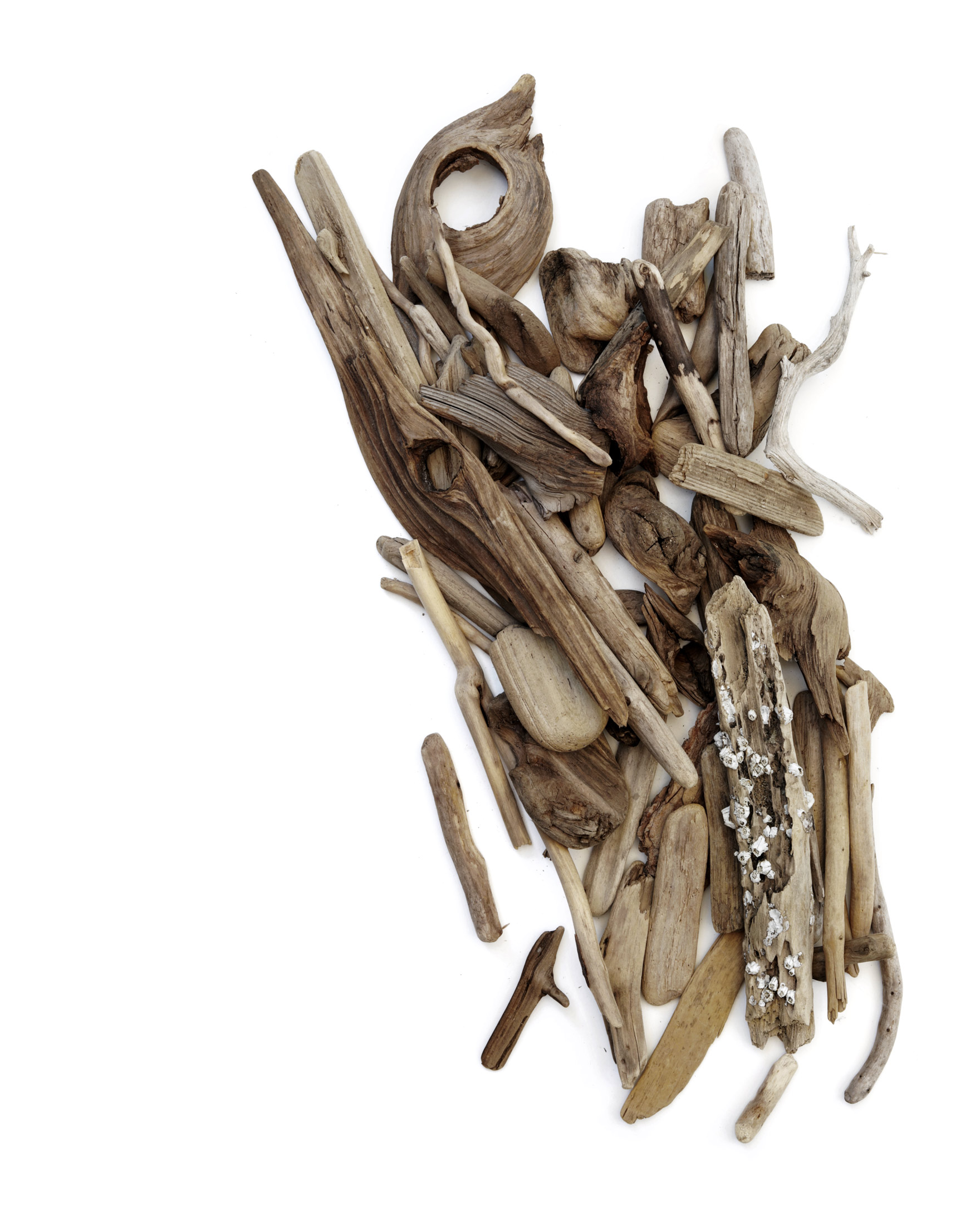
years in the making
I live a long ways from any ocean. As such, amassing this small collection of driftwood has taken over 10 years. Driftwood, seas glass, beach rocks–they all hold the same allure for me: soft, rounded, weathered, and oh so pleasing.
On a different note, while I was in California on book tour last week with Steve*, I was recommended a book called The Light Eaters by Zoe Schlanger. I am only 10 pages in and I can already tell that I am going to love it! When I have already highlighted three paragraphs in the first 10 pages, I know I have a winner on my hands. Anyone else read it yet?
driftwood collection
*P.S. Have any of you read Steve’s book? (A Season for That by Steve Hoffman). If so, are you willing to share what you thought?
-
I read and loved Steve’s book! Gave it 5 stars on Amazon, and have recommended it to friends. By the way, your book (which I also have and love!) is on display in the Maine Coastal Botanical Garden’s gift shop. :-)
reply -
Beautiful comp! Smoke bush leaves are the best. Anxious to see the other two.
The Light Eaters is on my list to read. I can’t wait. Am reading The Insect Crisis and Entangled Life concurrently, both fascinating (I think you’d like).reply -
Oops! The driftwood bits and pieces are delightful!
reply
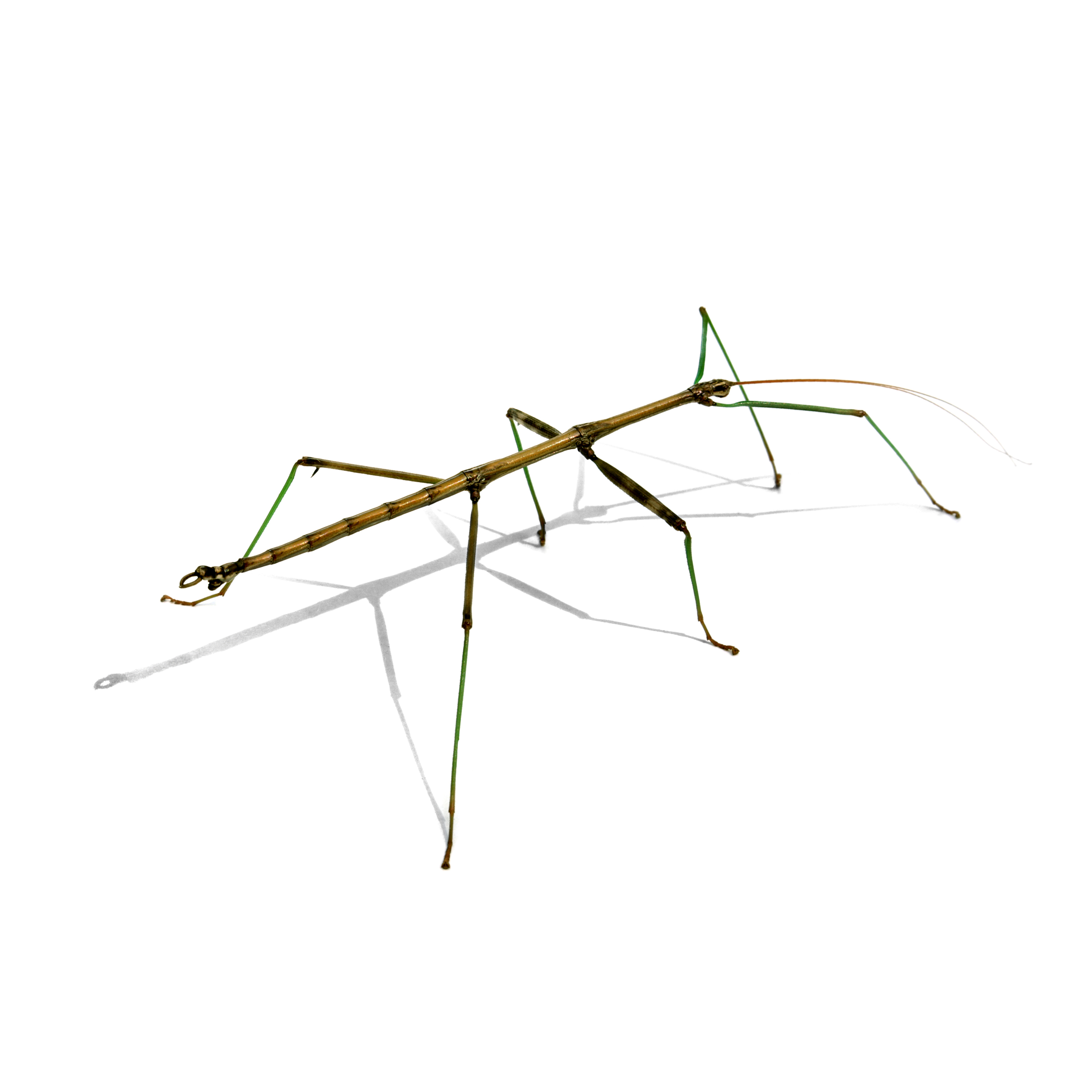
leaf skeletonisers
This not-so-little leaf eating insect is native to North America. This one had a body about 4 inches long. I found this one on my car side-mirror this morning. Even though the common walkingstick is a generalist it does tend to prefer foliage from oak and hazelnut trees. And I have A LOT of oaks, and Steve has been planting hazelnuts. In the shade, his body looked uniformly drab brown, but as soon as I caught him in the bright sunlight he became surprisingly colorful. According to Wiki, walkingsticks are leaf skeletonisers, eating the tissues between the leaf veins, pausing for a while and then walking on to new leaves. Leaf skeletoniser may be my new favorite expression.
northern walkingstick (Diapheromera femorata)



Marvelous trio. Tried to decide on a favorite but couldn’t do it. Well done!